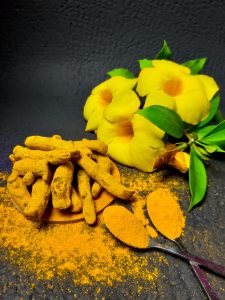Szechuan peppercorn comes from a small, deciduous tree native to certain regions of Asia, including Sichuan Province. The berries of the tree are harvested, dried and sold as whole peppercorns.
The leaves, stalks and oil of the plant are also used in cooking, but it is the dried berries that are synonymous with Szechuan peppercorn.
Szechuan peppercorns are different in many ways to black pepper. Firstly, they are not actually a peppercorn; they come from the prickly ash bush rather than the pepper vine. They also have a very different flavour profile.
Perceived Flavours:
Lemongrass
Citrus
Minty
Earthy
Eucalyptus
When ground into a powder form, Szechuan peppercorn creates an almost numbing sensation on the tongue. The term “num” refers to this sensation – which is often described as “tingling”, “prickling” or “buzzing”. This is due to the chemical compound hydroxy-alpha-sanshool found in the peppercorns oil.
Szechuan peppercorn’s flavor is not as strong as black pepper, but it is more complex. It has a distinctive aroma that comes from a chemical compound called hydroxy-alpha sanshool, which is only present in this type of spice. This compound numbs the tongue, causing a sensation similar to the one you get when consuming carbonated beverages. Even though Szechuan peppercorns can actually be quite hot, they are mostly used for their mouth-numbing properties and not for their spiciness. The numbing effect of Szechuan pepper creates an interesting sensation on the palate when combined with spicy chilies.
Szechuan peppercorn also has hints of citrus flavors, which makes it an excellent addition to stir-fries and seafood dishes.
Szechuan peppercorns are also popular in Asian desserts and candies due to its unique aroma and flavor. They are also sometimes used in broths for chicken soup, as well as in cooking meats like pork and duck.
Szechuan peppercorn (Sichuan/Szechwan pepper) is the star ingredient in Chinese Sichuan cuisine. It has an unique aroma, and a characteristic tingling, numbing effect on the tongue that sets it apart from the common black pepper.
The outer pod of the fruit of the plant is dried and used as a spice. The dried husk (cortex) of the seed is used in herbal medicine, including traditional Chinese medicine.
The spice can be found in most Chinese grocery stores or on amazon:http://amzn.to/2fhQY29
Szechuan peppercorns are not actually part of the black pepper family, but rather come from a separate genus entirely and is related to citrus fruits. Despite its name, it does not have the same level of heat as black pepper. What it does have is a unique citrus-like flavour and a tingling sensation on the tongue that numbs your mouth.
After being banned in the US for over 30 years due to concerns over citrus canker disease, it was finally legalized again in 2005. The ban never made much sense to me since I never expect Szechuan peppercorns to be grown in California anyway, but it was good news to chefs who had been growing their own or buying them illegally on the Internet.
Nowadays you can find them at most specialty markets, but they are expensive and there is still no guarantee that they will be fresh. So if you use them often (or if you like to buy in bulk), you might consider growing your own.
Szechuan peppercorn is the dried husk of the berry from the Chinese prickly ash shrub. No, it’s not a pepper, though it does have a similar pungency. In fact, Szechuan peppercorn is often referred to as flower pepper or prickly ash.
Szechuan peppercorn has a unique numbing quality that is often referred to as “ma la.” The numbing sensation comes from the chemical compound hydroxy alpha sanshool.
When used in Szechuan cuisine, the spice is typically combined with chili peppers to form one of two common flavor combinations that are fundamental to the cuisine. The first, called “suan la” (酸辣) in Chinese, is a mouth-numbing and spicy hot flavor. The second, called “ma la” (麻辣) in Chinese, is a numb and spicy hot flavor.
The Szechuan peppercorn is the outer pod of the tiny fruit of a number of species in the genus Zanthoxylum, widely grown and consumed in Asia as a spice.
In botanical terms, Szechuan peppercorns are not peppercorns at all but are the dried berries from a deciduous shrub called prickly ash. The plant is native to China where it is known as hua jiao, or flower pepper. It’s also known as Sichuan pepper, Japanese pepper, Chinese coriander, and Korean pepper. The prickly ash bush produces clusters of red-black berries which are picked just before ripening when they have a lemon yellow color. As with many Asian spices, the berries are dried in the sun until they shrivel and turn brown.
The characteristic tingling numbness caused by Szechuan peppercorns is primarily caused by hydroxy-alpha sanshool. Sanshools are a class of molecules that create this numbing effect; they are present in other spices such as cloves and cinnamon. However, while cloves and cinnamon contain only a few percent sanshools, Szechuan peppercorns contain up to 30%. This is why so little of it is needed to create
Szechuan peppercorns are the seed pods of a small, greenish-pink tree. They look similar to black peppercorns. Some people even call them “Chinese pepper” or “Szechuan pepper.” But these terms are a bit misleading.
These peppercorns are not related to black pepper or chili peppers, although they can have a similar heat and taste. They have an interesting citrus flavor and a unique tingling sensation on the tongue. This sensation has been described as “numbing,” like when your foot falls asleep or you bite into an ice cream cone too fast.
The Chinese have used these peppercorns for centuries in their cuisine, particularly in Szechuan cooking, which is known for being spicy and flavorful. The numbing effect is enhanced by the addition of dried chilies in many Szechuan dishes.
When you go to a restaurant that serves authentic Szechuan food, you may be served this style of cuisine with bowls of white rice on the side to help counteract the heat and spice of the food.

